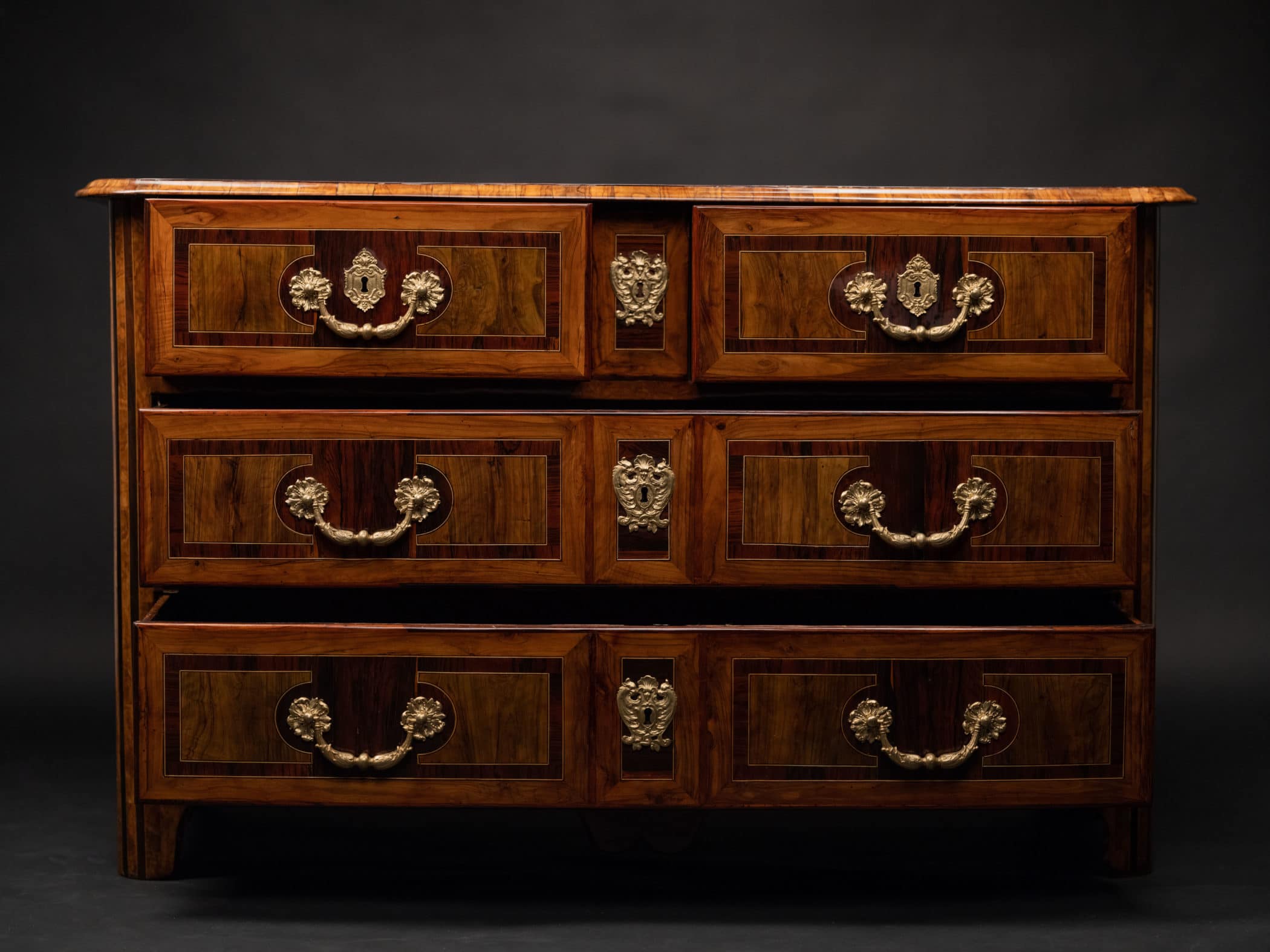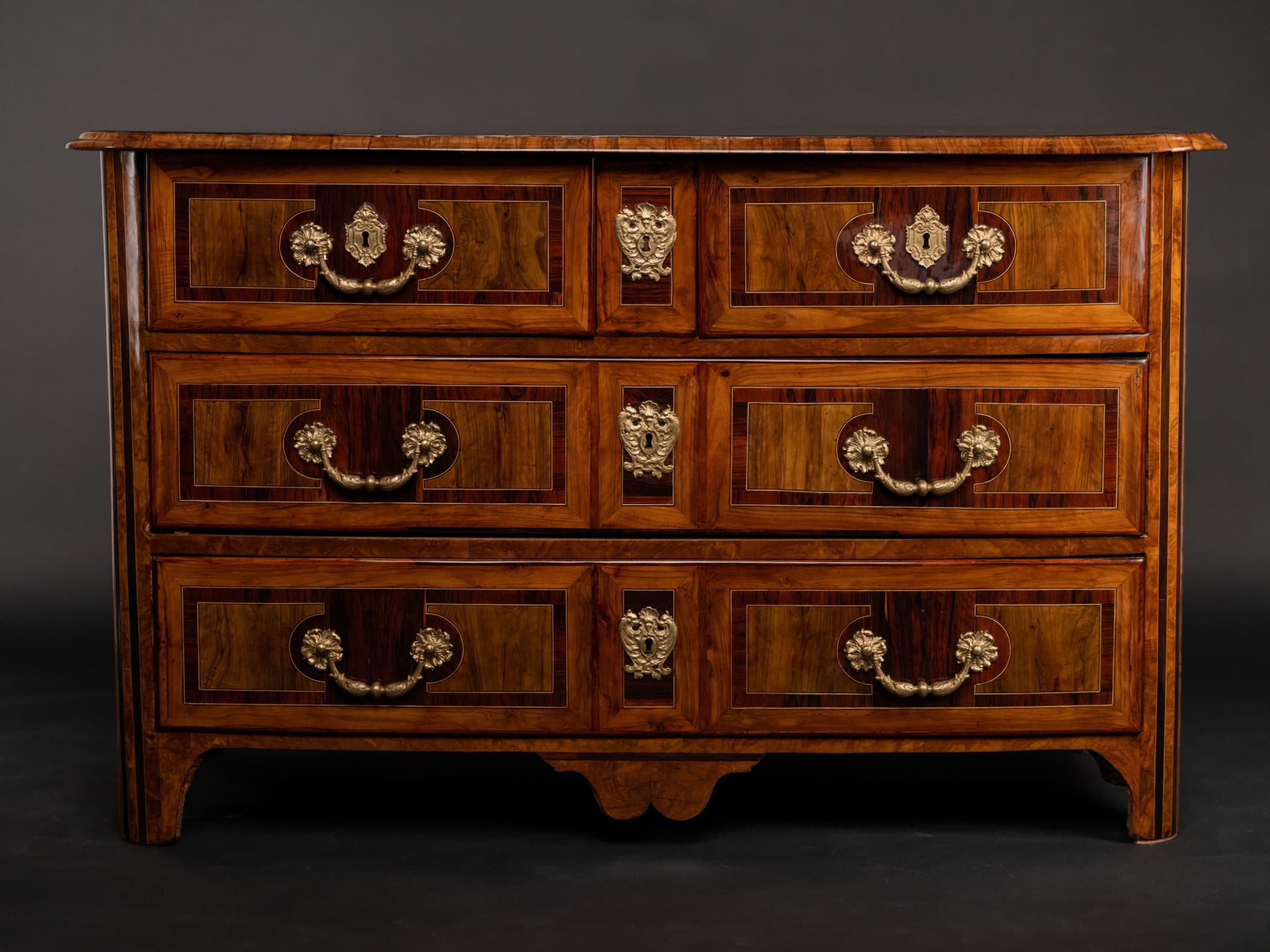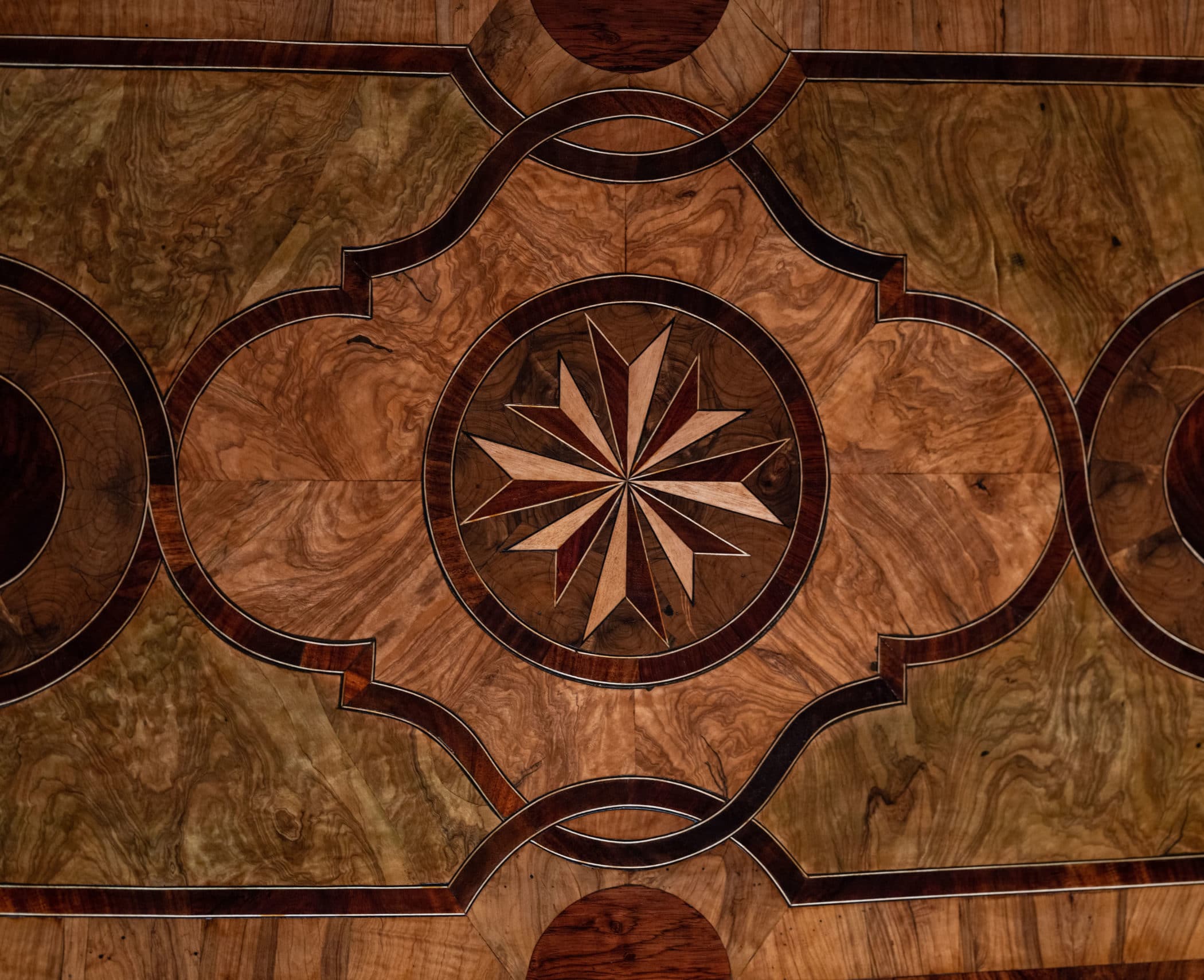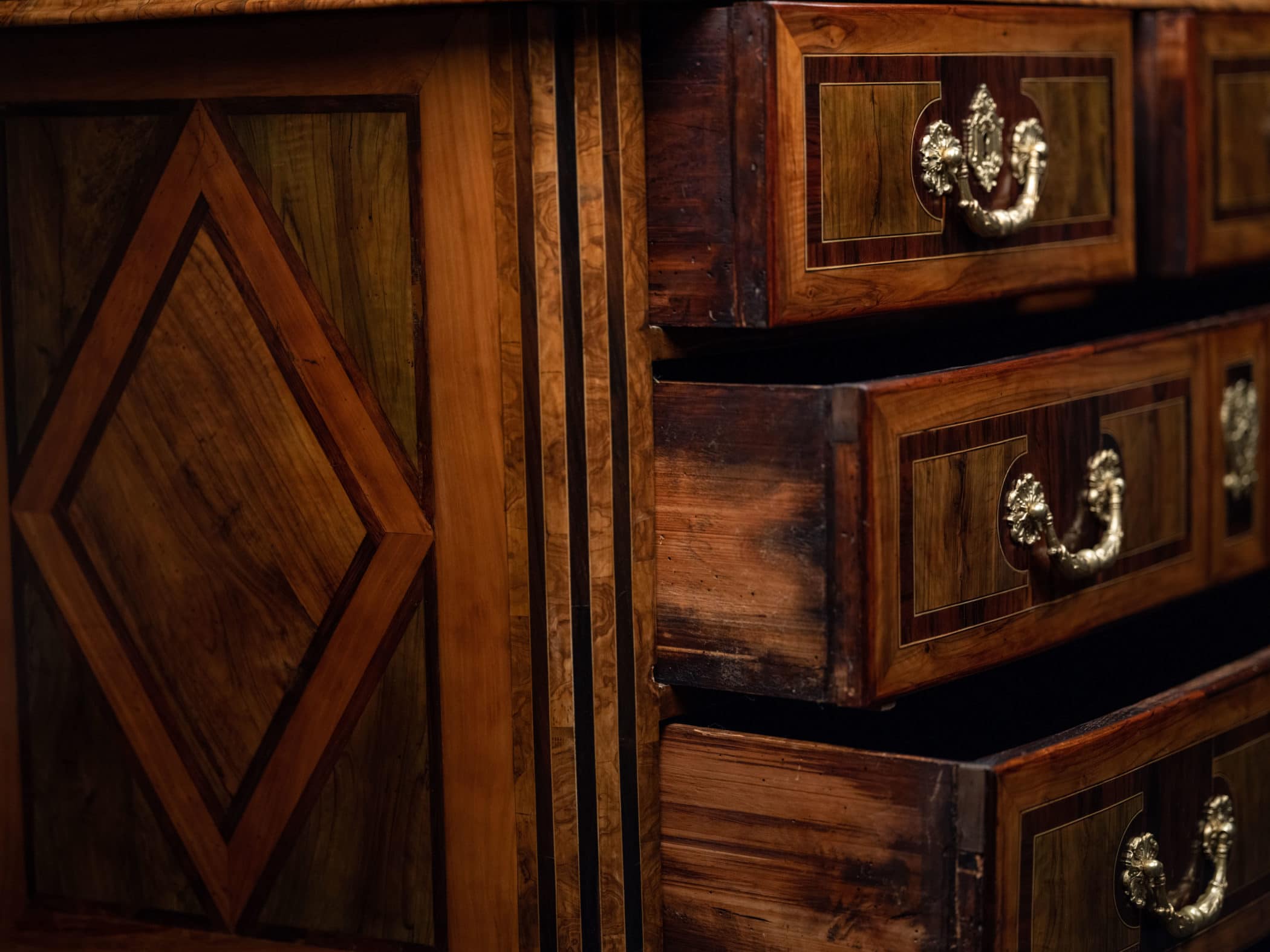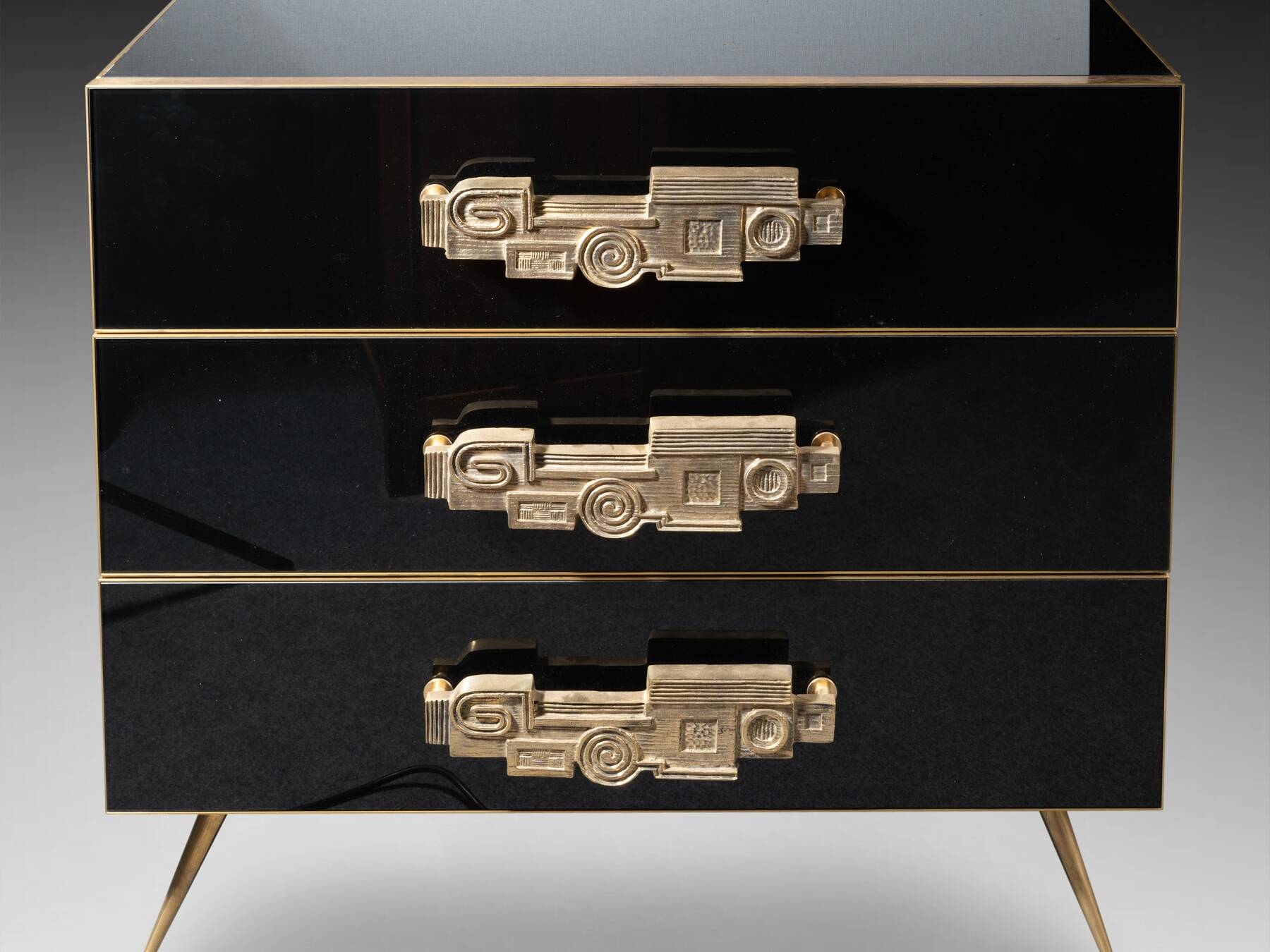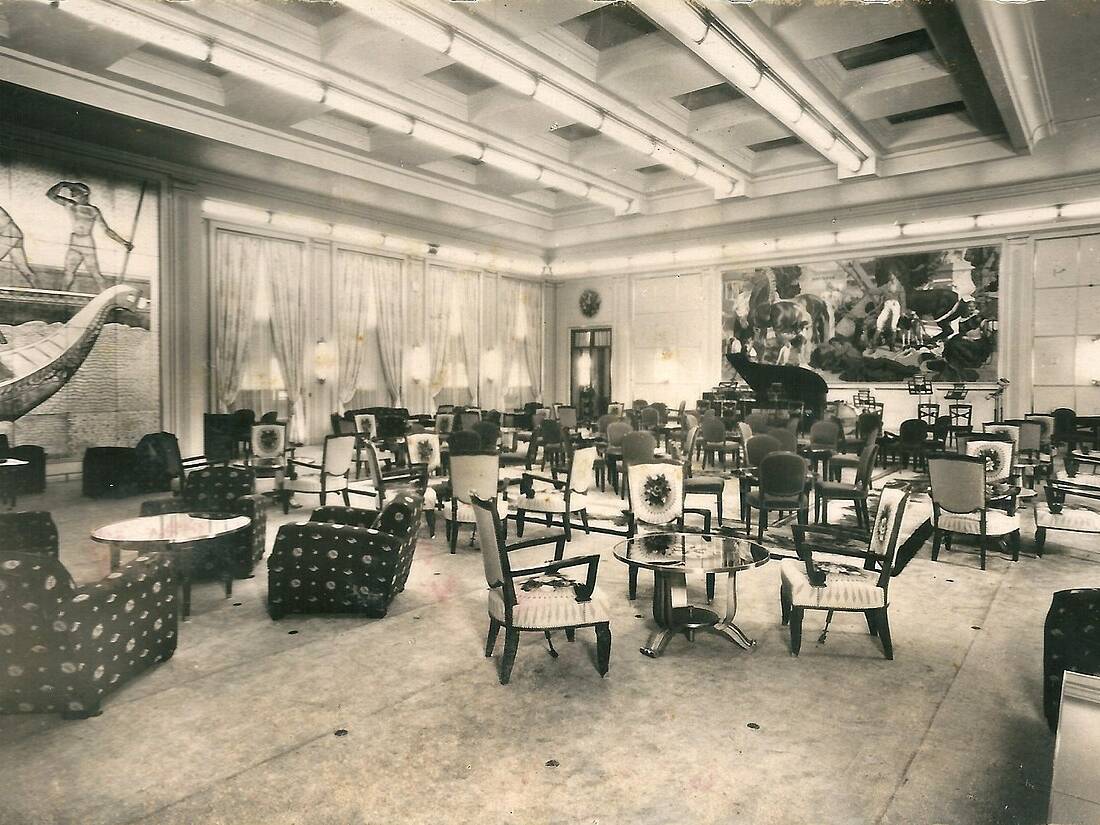Thomas Hache: the High-Flying Cabinetmaker
Noël Hache was not so much destined to cut precious veneers as to cut the dough pieces for which his father, a baker, intended him. However, this was not the case, as the young man had a different career in mind for himself. So he left the bakery to learn the art of cabinet making in Calais, soaking up Flemish and Dutch tastes and techniques. He later moved to Toulouse where his son Thomas was born. Like his father before him, Thomas Hache undertook a “grand tour” which took him to Paris where he undoubtedly did part of his apprenticeship with the famous Pierre Gole (1620 – 1684), cabinetmaker of Louis XIV. The workshop of this master of marquetry, a skilled colorist, was certainly a decisive step in the development of Thomas Hache’s technique and eye.
However, the latter does not want to stay in Paris. Leaving the capital, and with it its opportunities for prestigious commissions and its ruthless competition, Thomas Hache left for Chambéry. The Savoyard town was under Italian rule at the time and the young cabinetmaker developed a catalogue of motifs characteristic of Italian taste. Finally, he settles down in Grenoble, about sixty kilometres from the still Italian city.
He enters the workshop of Michel Chevallier (sometimes spelled Chevalier). The man familiarized the young Thomas with the Dauphinois taste and the local essences. This taste will remain. After Chevallier’s death in 1697, Hache married the cabinetmaker’s daughter and inherited his father-in-law’s workshop. He became master in 1701. According to the wishes of a wealthy clientele, he produced furniture with elaborate decorations, full of bouquets, baskets of flowers, medallions and other foliage.
In parallel with this taste inherited from his years in Chambéry, Hache used natural or tinted burl panels on many of his pieces of furniture, raised with fillets on plain veneer backgrounds. Walnut, fruit woods, olive, sycamore and ash trees are tinted to taste in green, red, black moiré or yellow when they are not left natural. Our chest of drawers attributable to Thomas Hache is a good example of this sober and elegant Dauphin taste, preferring to precious exotic woods local ones so well worked that one never tires of admiring their beauty. Without doubt, the magnifying burls are emblematic of his production and that of his successors.
Hache : Fame Beyond the Dauphiné
At the turn of the 18th century, Grenoble was placed under the authority of the Duke Louis d’Orléans (1703 – 1752), son of the Regent and grandson and grandnephew of Louis XIV. Appointed governor of the Dauphiné in 1719, two years later he awarded Thomas Hache a cabinetmaker’s and guard’s certificate. The latter’s reputation, already well underway, is now sealed. The initially wealthy clientele soon gave way to the elite; it was now aristocratic and princely.
According to the historian Françoise Rouge, “the reasons for such a reputation lie as much in the inventiveness of the assemblies and forms as in the originality and quality of the decorations, favouring the use of indigenous woods and specific ornaments”. The furniture of choice by Thomas Hache was the most fashionable at the beginning of the 18th century: the chest of drawers.
Who would have thought that a provincial cabinetmaker could claim to equal – and even surpass! – the best masters in the capital? At a time when it was almost inconceivable to attract aristocratic and princely favour elsewhere than by settling in Paris, Thomas Hache was an exception. For if the man possessed a certain and original taste in the handling of colours, he was also particularly ingenious. He developed a system that allowed him to place a marquetry or marble top on his luxurious chests of drawers upon request. The design of each piece of furniture was impeccable, the quality of execution remarkable. In Paris, Hache became a must.
Today, despite an unfortunate lack of interest in 18th century furniture, the productions of the Hache dynasty – and those of Thomas Hache in particular – are still exceptional. The inexhaustible savoir-faire of this cabinetmaker, but also the rarity of his pieces, is the explanation for this never-ending craze.
Before his son Pierre, stamps are rare and it is often very difficult to identify a piece of furniture from the hand of the master. Our chest of drawers is a piece of this exceptional production attributable to Thomas Hache. A true “piece” of history and cabinet making whose virtuosity is guaranteed to stand the test of time.
Marielle Brie
Art Historian for Art Market and Cultural Media
Author of the blog Objets d’Art et d’Histoire
Autres ressources et documentations
28 June 2025
Plaster Sculptures, Plaster Casts
For a long time, plaster casts suffered from a poor reputation. Often regarded as crude replicas, and sometimes even dismissed as inexpensive imitations, they nonetheless had…
17 April 2025
The Middle-Ages Furniture
Rare and highly sought-after, Middle-Ages furniture is making a strong comeback. An overview of this market, where enlisting the guidance of a professional is strongly advisable.
18 March 2025
Murano Glass Furniture
Since the beginning of the 20th century, Murano glassmakers have been exploring new horizons. After classic lighting and decorative art, Murano glass is now used to adorn…
16 December 2024
A bronze triton after the sculptures of François Girardon (1628 – 1715) in Versailles
This fountain element is all the more admirable as it is sculpted after the masterpieces of the Pyramid Basin, on the parterre of the North Wing of the Versailles gardens.
18 November 2024
Tyco Bookcase, by Manfredo Massironi, for Nikol International
A pure creation of optical art research in the 1960s, the Tyco library shelf designed by Manfredo Massironi invites the viewer to bring the work of art to life on a daily basis.
3 August 2024
The Ocean Liner Style
In the 20th century, the immense ocean liners connecting the Old Continent and the New World were ambassadors of tastes and innovations on both sides of the Atlantic.

